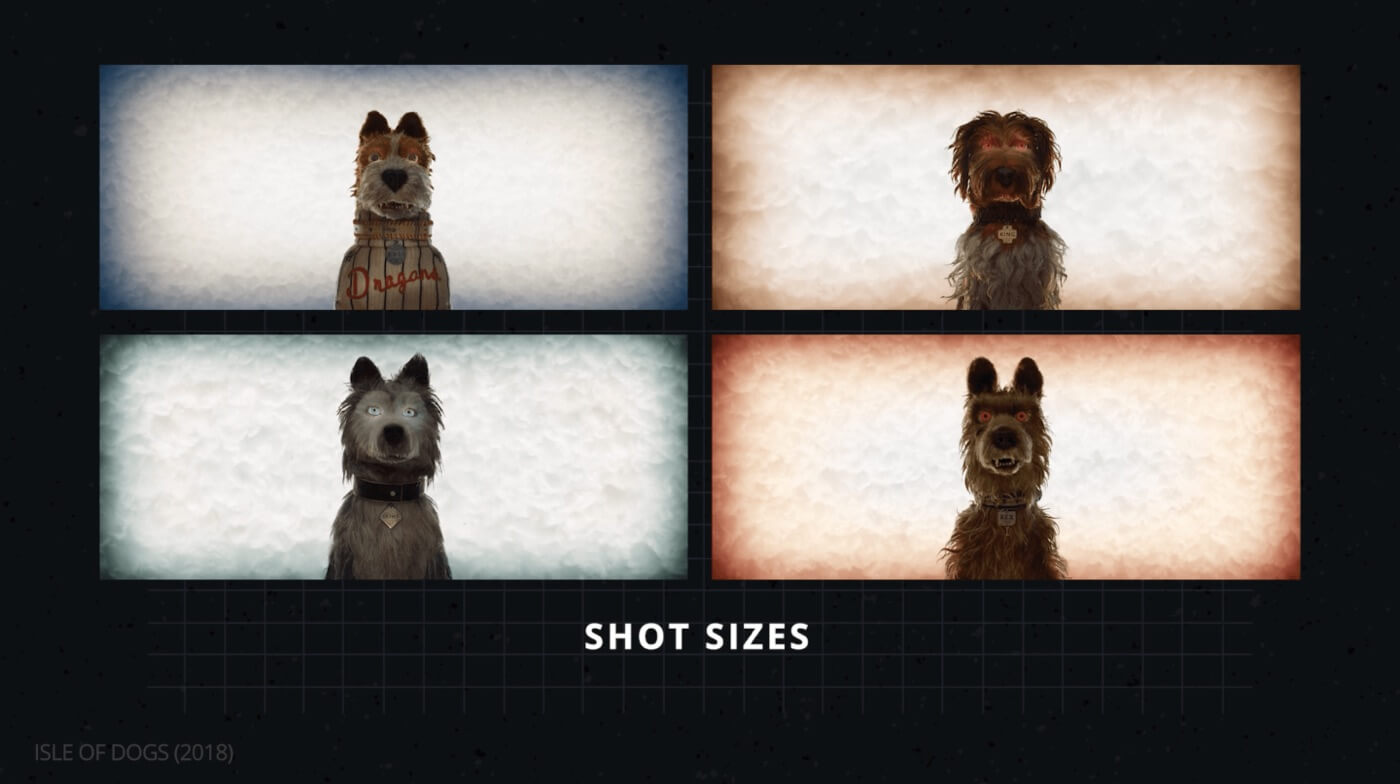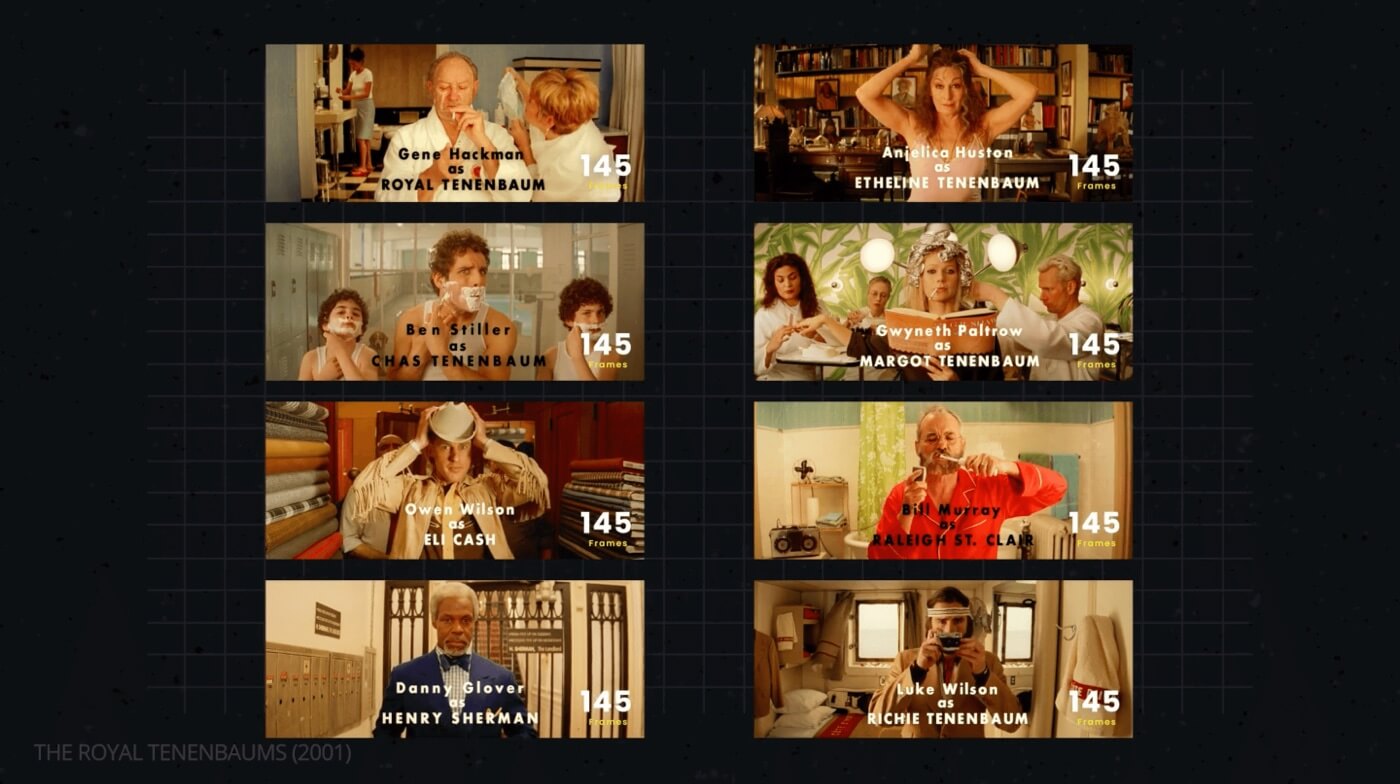Much has been made about Wes Anderson’s use of symmetry in shot composition – but did you know symmetry extends to his editing style as well? Wes Anderson utilizes symmetry in every facet of his filmmaking process, from pattern events to blocking and staging. We’re going to show you the art behind Wes Anderson’s symmetrical editing; by the end, you’ll know how it works and why it’s such a stylistic strength.
Wes Anderson Symmetry
Wes Anderson’s style explained
With most filmmakers, it is rare to carve out a category for yourself but Wes Anderson is a director with a style entirely his own. Anderson's color palettes are one of his visual calling cards – but there’s a lot more to his work than just vibrant characters and production design. And so we’re going to examine Wes Anderson’s symmetrical editing, from Rushmore to The French Dispatch, but first, let’s define symmetrical editing.
SYMMETRICAL EDITING DEFINITION
What is symmetrical editing?
Symmetrical editing is a style of editing where one or more elements is matched between shots. This goes beyond simple match cuts to include blocking, staging, and timing as well. Symmetrical editing is not mutually exclusive from continuity editing or disjunctive editing, but rather a stylistic extension of either temporal techniques.
Elements of Symmetrical Editing:
- Composition
- Blocking
- Staging
- Pattern Events
- Rhythm
Wes Anderson Film Style
Primer on editing techniques
Symmetrical editing is just one type of editing – there are countless more. Want to learn more about film and video editing techniques? Check out our next video, where we break down examples from The Godfather, The Matrix: Resurrections, and more.
Essential Film & Video Editing Techniques Explained • Subscribe on YouTube
Continuity editing is an editing system that’s meant to maintain time and space. Conversely, disjunctive editing is an editing system that’s meant to disrupt time and space. These techniques are known as temporal techniques because they refer to the time and place of a film world. Symmetrical editing can be used with either technique, as it’s not reliant on progressive or regressive plot mechanics.
For more on film editing, check out our following articles:
Style Wes Anderson
Symmetrical editing: shot reverse shot
Since the beginning of cinema, filmmakers have used a technique called “shot reverse shot.” What is shot reverse shot? For an answer to that question, check out our video below.
Inspired by How to Shoot Reaction Shots, Shot Reverse Shot • Subscribe on YouTube
Shot reverse shot is a film coverage technique that shows a shot of one subject, then reverses the view with a shot of another. For example, these shots are often made at contrasting angles; i.e., over the shoulder right, reverse to over the shoulder left. However, Anderson often does something very different – he often aligns his subjects in the center of the frame.

Wes Anderson Symmetry Shots in The Royal Tenenbaums
This isn’t just a gimmick tool for Anderson either; symmetrical framing in shot reverse shot is a crucial part of his directing style.
Anderson uses this strategy with a variety of shot sizes, from medium to close up, to everything in between.

Wes Anderson Symmetrical Shot Sizes in Isle of Dogs
So, if you want to edit like Anderson, don’t be afraid to match symmetrical shots. Use different shot sizes to give viewers varying degrees of closeness to the subjects. And you can easily practice at home with two subjects – create a 180 degree line with your subjects on opposite sides.
Shoot subject one face-on, center frame. Then shoot subject two face-on, center frame. And voila, you’ll have a symmetrical shot reverse shot.
Symmetry in Wes Anderson Films
Symmetrical editing: pattern events
You’ll find pattern events in many of Anderson’s best movies, including Moonrise Kingdom. For example, Anderson takes something as simple as walking along a straight path and turns it into a lesson in symmetrical editing. The mirrored blocking and staging and how it visually aligns Sam and Suzy.
Wes Anderson Aesthetic Explained • Symmetrical Editing in Moonrise Kingdom
This example is remarkably simple, if not for its benign blocking then for its basic staging. We call this example symmetrical because the framing of subject one (Sam) mirrors the framing of subject two (Suzy). Anderson effectively works from an extreme long shot to a full two-shot through the use of symmetrical editing.
Elsewhere, Anderson uses pattern events as a method of “setting juxtaposition.” In this scene, Anderson uses a game of phone tag to bring us around the world of The Grand Budapest Hotel. Each sequence leads to a symmetrical shot with a nifty iris effect.
Wes Anderson Symmetry • Symmetrical Editing in The Grand Budapest Hotel
The process of getting to each shot could be regarded as symmetrical as well; for in the world of The Grand Budapest Hotel, concierge and lobby boy are as central to the plot as they are to the frame.
We imported a series of screenshots from The Grand Budapest Hotel into StudioBinder’s storyboarding software to show the blocking and staging from the train arrest scene. Click the link below to see the storyboard laid out!Wes Anderson Camera Shots from The Grand Budapest Hotel
Pattern events are used all over cinema, from training montages to interrogation scenes. This example from Harold Ramis’s Groundhog Day shows that repetition can be an effective tool in symmetrical editing. You’ll notice that Ramis changes the framing of the clock over the course of the movie, bringing the camera closer and closer to its ticking digits.
Why Does Wes Anderson Use Symmetry? • Look to Symmetrical Editing in Groundhog Day
Remember, symmetrical editing isn’t all about symmetrical framing! It can be about pattern events and rhythmic cuts too. Groundhog Day is a perfect lesson in various elements of symmetrical editing.
The Wes Anderson Aesthetic Is Rooted in Classic Theory
Wes Anderson’s metric montage
What does Wes Anderson and Soviet Montage Theory have in common? Well, as it turns out, quite a lot. Soviet Montage Theory – a film movement that took place in Soviet Russia during the 1910s, 20s and into the early 30s – outlined five steps for montage filmmaking.
One of the five steps is “metric montage,” which is defined as matching shots by cutting at a certain number of frames. For example, any two or more shots that are consecutively cut at the same exact number of frames is regarded as an example of metric montage.
In today’s cinema scene, metric montage has all but gone out of style. However, some directors are keeping the technique alive; Anderson is one such director.
In The Royal Tenenbaums, Anderson mostly sticks to metric montage for the title card introduction of each major character. Some theorists suggest that the symmetrical nature of shot composition distracts from the metrical flow.

Wes Anderson Frames • Metric Montage in The Royal Tenenbaums
Metric montage is a style of montage that’s meant to mirror the meter of a musical score. There’s no doubt about it: when used effectively, metric montage gives a movie a fluid type of flow. Anderson expertly uses metric montage in many of his films.
Up Next
The Wes Anderson Style Explained
There’s no denying that Wes Anderson is a filmmaker unlike any other. Want to learn more about Wes Anderson’s singular filmmaking style? Check out our next article where we break down Anderson’s entire filmography with a focus on color, framing, miniatures and more. By the end, you’ll know more than just Wes Anderson’s symmetrical editing; you’ll know all the major reasons why he’s considered one of the greatest living filmmakers.
Up Next: Anderson Style Guide →
Showcase your vision with elegant shot lists and storyboards.
Create robust and customizable shot lists. Upload images to make storyboards and slideshows.

